Camphor Tree, Camphor Laurel
Cinnamonum camphora
Bloom time
From January to April.
Characteristics
The tree grows up to 20 m (22 yd.) high and disposes of a very close branch network. Together with its dense foliage this creates a spreading crown. The ovate, tapered leaves turn upwards remarkably feebly. The great number of inconspicuous, greenish blooms branches erectly from thin panicles.
Site:
The Camphor Tree is one of the most impress-ing trees that grows in Madeira’s parks. It prefers warm, sheltered sites close to the southern coast. You will mainly find it in Funchal, e.g. in the Parque Santa Catarina ( 198) or in the Quinta Magnólia ( 199).
Interesting to know:
The Camphor Tree is indigenous to China, Taiwan and Japan where it is admired for its giant stature and for being able to become hundreds of years old. Today it is recognized as an ornamental tree in all warm countries. The Camphor Tree resembles laurels and is assigned to the same family. Being crumbled, the leaves smell of camphor. Initially, cam-phor oil was produced by distilling it from the shavings. It has already been employed for centuries both externally against rheumatism and internally to support the heart functions.
18
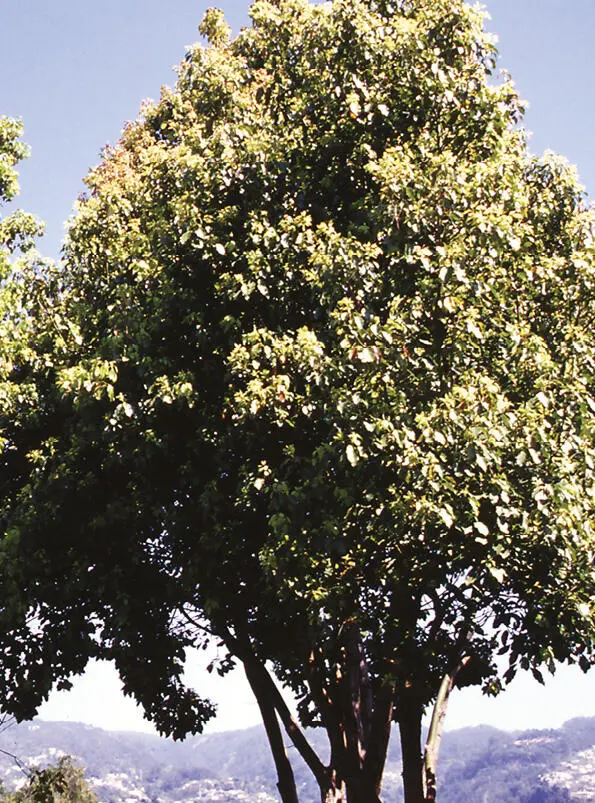



In the Gardens
Brazilian Kapok Tree,
Pink Floss Silk Tree
Ceiba speciosa
Bloom time
September and October
Characteristics
The trunk can grow up to 15 m (16 yd.) tall and tapers remarkably in upward direction. It is covered with conical spines. The hand-shaped leaves fall off in spring. The pear-shaped fruits contain a silky substance. The five-petaled, pink flowers develop before the new leaves emerge.
Site:
In the southern half of Madeira you will fre-quently find the Brazilian Kapok Tree up to an altitude of 350 m (385 yd.). It lines roads and decorates parks and gardens. Beautiful speci-mens can be contemplated e.g. in the Jardim Municipal (Funchal, 198) and in the garden of the Quinta Vigia ( 198). In Machico you will find a Kapok Tree next to the town hall, in Caniço at the Parking of Quinta Spléndida.
Interesting to know:
The Brazilian Kapok Tree is native to the savan-nahs of Brazil and Argentina. The fruits contain about 100 black seeds with white, woolly hairs that are distributed by wind. The Common Kapok Tree/Silk Cotton Tree (Ceiba pentandra) that does not grow on Madeira but is cultivat-ed on Asian plantations disposes of seed hairs that are of commercial value. They are waxy and do not absorb water - thus they are used to produce life jackets, lifebelts and mattresses.
19
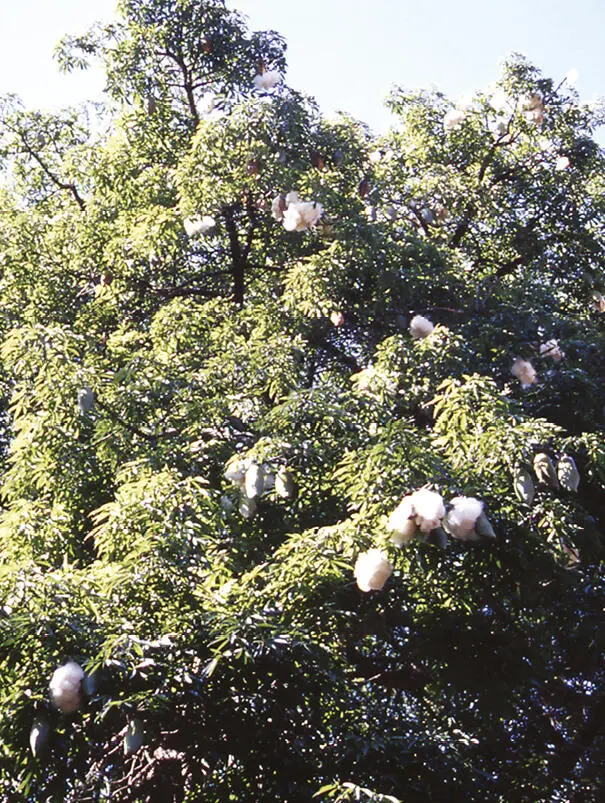
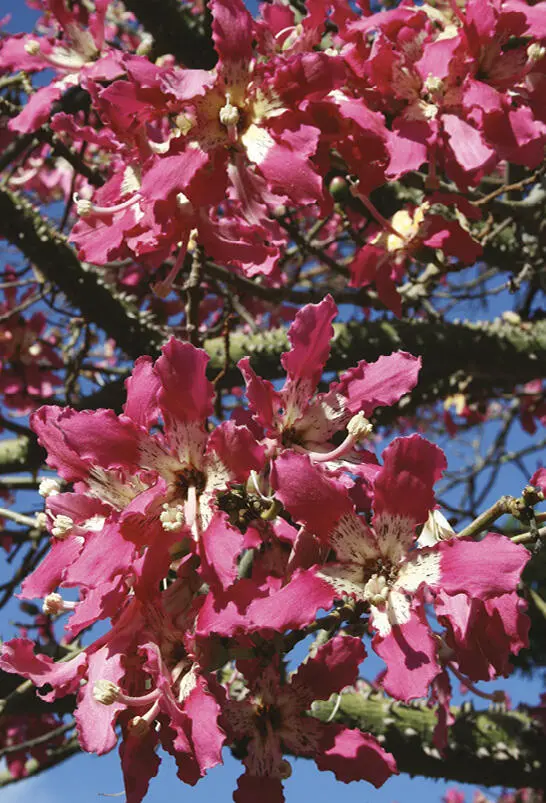


In the Gardens
Sausage Tree, Fetish Tree
Kigelia africana
Bloom time
From June to August.
Characteristics
The colour of the trumpet-shaped blossoms ranges from deep red to purple. They hang in loose panicles on long stalks. The typical sausage-like fruits are developing from the blossoms. Some are longish, others bulbous. The leaves of this tree that reaches a height of 5 m (5,5 yd.) are pinnate and fall off in winter.
Site:
You will find the Sausage Tree growing only in the south up to an altitude of 100 m (110 yd.). It is hardly ever cultivated in gardens and parks. Three beautiful specimens are situated in the Jardim Municipal in Funchal ( 198), another one in the Parque Santa Catarina ( 198). Two other specimens are to be found in the Quinta Magnólia ( 199).
Interesting to know:
The Sausage Tree is indigenous to West Africa. In this humid and warm regions it grows up to 20 m (22 yd.); the fruits may be up to 1 m (3,3‘) long and weigh up to 10 kg. The specimens that grow in Madeira’s gardens do not reach these dimen-sions. The fleshy fruits are inedible; anyway they are used in Africa by traditional medicine and magic. They are supposed to cure rheumatism, snake bits and syphilis as well as to protect from evil ghosts. The flowers only blossom one night. At daytime you only see buds or wilted blooms.
20

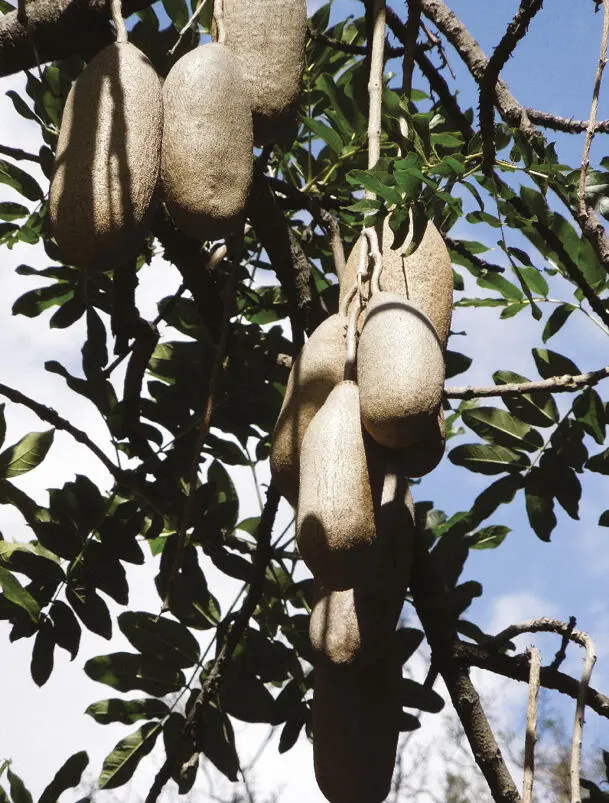


In the Gardens
African Tulip Tree,
Flame of the Forest
Spathodea campanulata
Bloom time
All year round.
Characteristics
The decorative tree can reach a height up to 25 m (28 yd.). Its dark green leaves are pinnate. Round inflorescences are situated on the surface of the dense, spherical crown. The tulip-like flowers are coloured from orange to scarlet and are slightly curved towards the centre of the blossom cluster.
Site:
In the southern coastal area of Madeira you will frequently find the tree as an ornamen-tal plant up to an altitude of 200 m (220 yd.). It lines town roads and grows in gardens and parks. In Funchal you find some speci-mens in the Parque Santa Catarina ( 198), in the Avenida do Infante and in the Avenida Luis Camões that leads towards the hospital.
Interesting to know:
The tree is native to the African savannahs where, in contrast to Madeira, it sheds its leaves in the arid season. Today it is one of the most popular ornamental plants in all countries that correspond to its climatic requirements. It is a fast growing tree; the wood is hardly usable. The outer buds bloom first while the inner, brown and hairy buds still remain closed. Birds in search of nectar will land on the latter ones. On Madeira, pollination is not taking place.
21
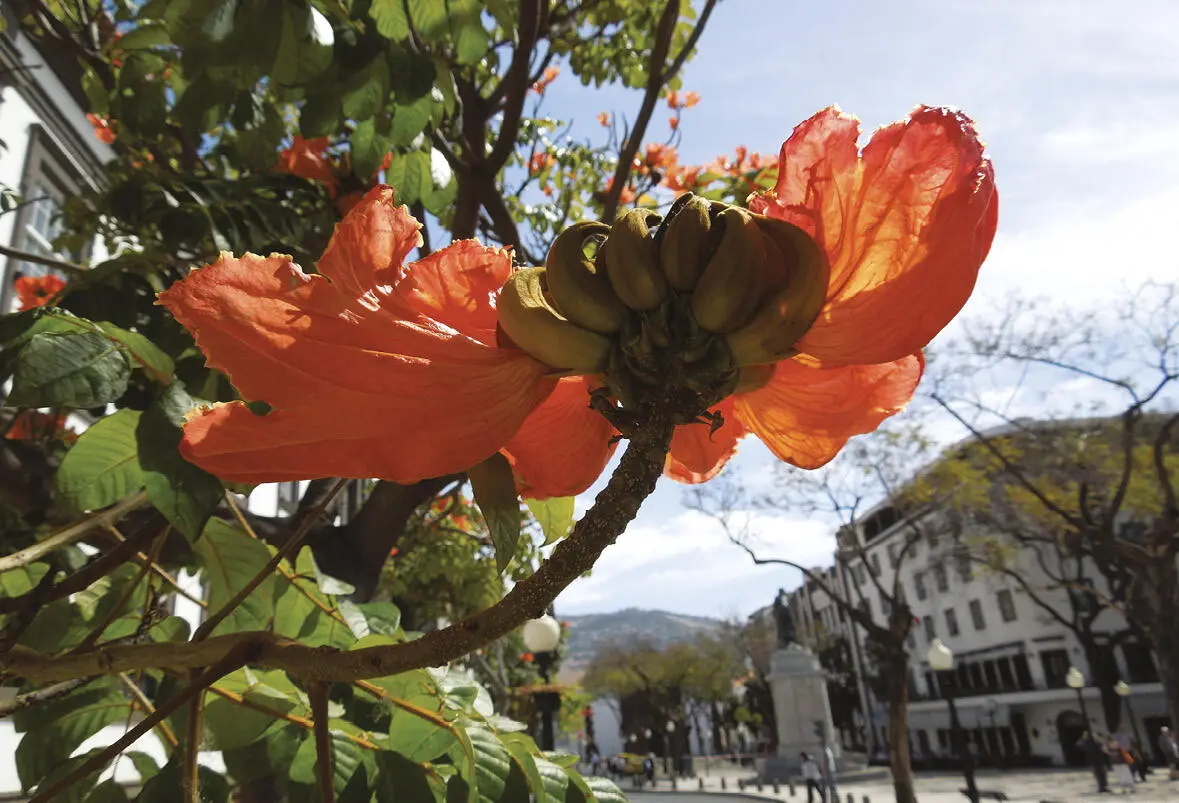


In the Gardens
Читать дальше





















